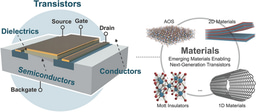Neil Kelleher and Lloyd Smith propose that the scientific community adopt the term ‘proteoform’ to refer to all the different forms that a protein can take. Will the community adopt it?
The field of top-down proteomics, in which intact proteins are analyzed by a mass spectrometer, provides rich information about the genetic variations, alternative splicing and post-translational modifications that can be lost in a bottom-up proteomics approach (where proteins are digested into peptides prior to analysis). An unsolved problem in the top-down field, however, has been what exactly to call these various protein forms. Besides ‘protein forms’, a handful of other terms have been batted around in the literature, including ‘protein variants’, ‘protein isoforms’ and ‘protein species.’
In a Correspondence in the March issue of Nature Methods, Neil Kelleher and Lloyd Smith lay out the reasons why none of these terms are satisfactory. What is needed, they argue, is a novel, unique, intuitive, single-word term with a precise definition that is all-encompassing in describing protein complexity, and is also compatible with a gene-centric approach to protein naming. They believe that they have the perfect term: proteoform.
“It’s not just a term, it’s a movement,” says Kelleher. Kelleher has been one of the key drivers of top down methodology development, and argues that using a controlled vocabulary to describe proteins will serve a catalytic role in moving the field forward. “The implicit thing about this term is that it puts a focal point on the fact that [the proteoforms] are the functional players, insofar as protein primary structure is concerned,” he says. Especially in clinical research, he notes, different proteoforms are tied strongly to function and phenotype.
Kelleher and Smith have been gathering support for their term over the last several months by introducing it at conferences and inviting researchers to comment on a LinkedIn forum. The term also has the full support of the Consortium for Top Down Proteomics. At their latest conference in Florida, about a month ago, Kelleher says that “everyone” was using “proteoform” in their talks. “It just catches on…it fills a void the rolls right off the tongue at conferences and sits well in the gut while digesting text,” he says. The consortium website maintains a repository of proteoforms, which they hope will grow. Kelleher also notes that the term is being embraced by key protein informatics players at UniProt and the Protein Information Resource, both of which have adopted a gene-centric approach to protein naming.
What do you think about the term “proteoform”? Will you adopt it? We’d love to hear from you!


![Highlights of the BMC Series - [October] [2025]](https://images.zapnito.com/cdn-cgi/image/metadata=copyright,format=auto,quality=95,width=256,height=256,fit=scale-down/https://images.zapnito.com/users/840921/posters/759a1fb0-b10f-491e-bdff-940b3c1a87de_medium.png)


Please sign in or register for FREE
If you are a registered user on Research Communities by Springer Nature, please sign in